Tourism North East is reimagining the future of visitor servicing for Victoria’s High Country with a range of digital servicing technologies to launch at the end of 2022.
An in-depth exploration of visitor servicing will lead to the thoughtful application of digital technologies, to help visitors access up-to-date, location-specific content in real-time.
“As visitors engage with a destination through crafted content, expert storytelling and digital wayfinding, they will have more confidence to explore and discover more authentic experiences – something they told us they really value,” said Tourism North East’s Head of Digital Experience, Dean Cleave-Smith.
Unveiling opportunities in visitor servicing
In November 2020, TNE embarked on a multi-phase project to investigate a new vision for visitor servicing.
Phase one set out to understand the current state of visitor servicing through in-depth stakeholder interviews and on-the-ground research.
“It quickly became clear that the role industry plays in visitor servicing is far more critical than we first thought,” said Dean.
“We found operators suggesting places and experiences to visitors are incredibly influential in what visitors decide to do.”
Related to this was the insight into how visitors decide what to do while in the High Country.
“We found most people come here with one fixed thing they want to do, whether that’s mountain biking at Mystic or hiking the Razorback trail, and everything else is decided on the day.”
Dean said one surprising insight was that when people go home, they still have money in their pocket.
“People think they’re going to spend more while here, but they are unable to do so. That may come down to the people who influence their activities, who are either more likely to suggest free activities or not confident enough in their knowledge to recommend paid activities.”
Importantly, visitors also want to get the inside word on authentic experiences.
“They want to go to the swimming hole that nobody else knows about, or the bar that locals go to. People don’t want to be tourists; they want to be guests.”
Creating the future of visitor servicing
The next phase was to turn these insights into an actionable vision for visitor servicing.
Working with design and research firm Meld Studios, TNE led workshops with a range of stakeholders across the region to create concepts around what the future state of visitor servicing might look like.
Then, in an extensive engagement phase, some 35 concepts were presented to consumers for feedback and key themes were identified.
“The overriding theme was the need for consistent access to reliable information, and to see it in a quick efficient manner, whether on a map or in some other form,” said Dean.
“Ultimately, consumers are looking for a single source of truth when it comes to finding information on digital channels.
“They also want hyper local, real-time content around what there is to see and do, so they can find things to do that same day, without planning in advance.”
Dean said there was also a nostalgic desire for a good map.
“People told us they want a reliable map that allows them to explore with confidence and find things to see and do on the way to their next destination.”
Creating a digital-enabled experience
Bringing it all together, TNE is currently working on a new digital experience, including enhanced online content, an app, and signage to deliver compelling information and stories to visitors on the day.
The current digital content repository, which supports all TNE websites, is being enhanced and extended to provide more granular information around what to see and do, including opening times, facilities, and more.
Content will also be provided via an app, which will combine wayfinding, storytelling, and real-time information about a place – all while providing a responsive and personalised visitor experience.
And to provide up-to-date, location-specific information, QR codes will be rolled out onto new and existing signage across the region.
“Visitors who scan the code will be provided with information on what to see and do around the QR code location – whether that’s at a trailhead, in a café, or in their accommodation,” said Dean.
Dean said these self-serve tools will work alongside industry operators to provide more meaningful, authentic experiences for visitors.
“We know people in the High Country are incredibly influential in helping visitors decide what to do and see. That’s why we are also working with operators, through Industry Immersion Days and other initiatives, to give them the knowledge to become storytellers and feel confident narrating experiences.”



